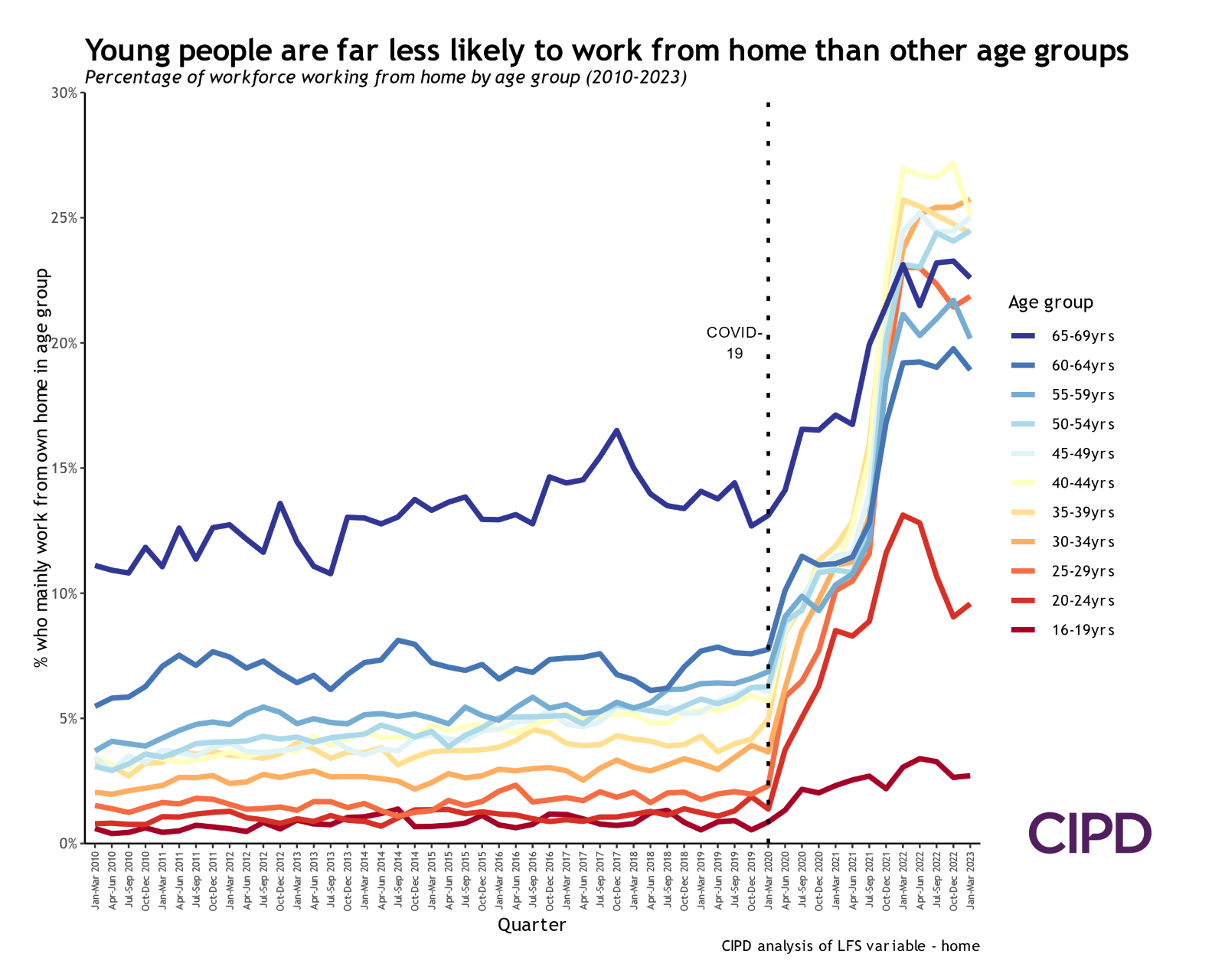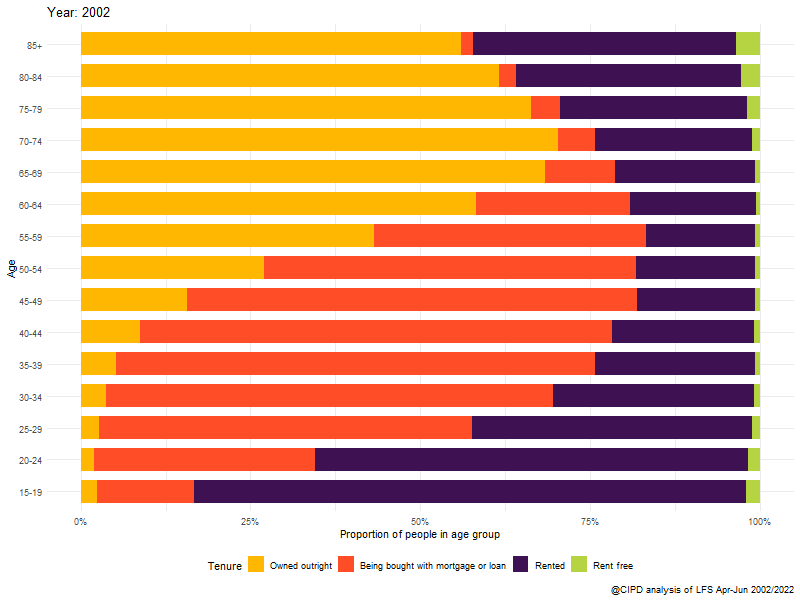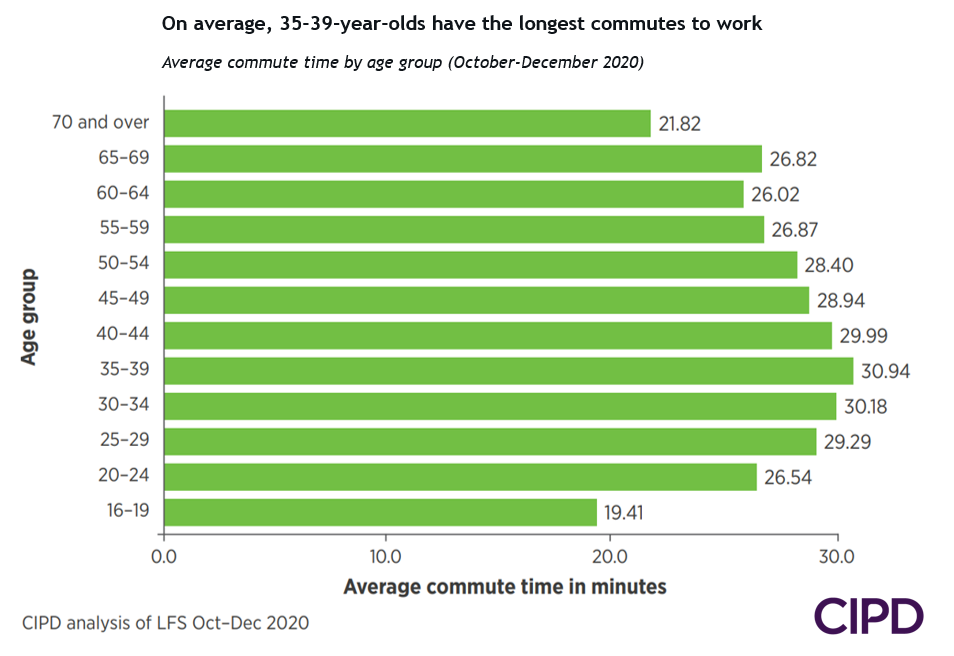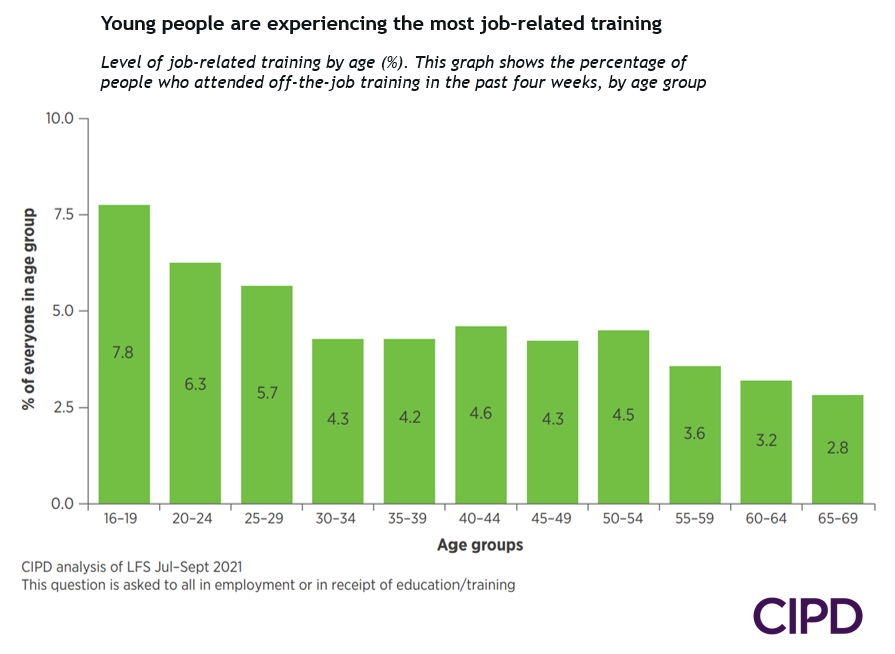Jon Boys, Senior Labour Market Economist at the CIPD, analyses working from home trends by age to find out if young people in the UK are working from home less
Age matters when it comes to working from home trends and reporting on them. And a key part of that reporting is understanding what working from home looks like for young people. Young people, it’s reported, have historically worked from home least and are heading back into the workplace in greater numbers.
In this blog post, we consider some of the drivers of the trend towards young people heading back into the workplace and explore some lessons for HR.
Please note: The data in this blog post covers everyone in work in the UK (all jobs). Not just office workers.
Working from home trends by age
In early 2020, we published a report that showed homeworking had risen a whopping 40% in just two decades. Since then, the figures have shot up even further. Every three months, we add another data point to the time series, expecting the figures to plateau at a new normal, but things have still not settled three years on. Even today, workplaces are still trying to figure out the right balance.
The initial rise in homeworking was driven by lockdown, but it’s been years since the easing of restrictions. The high rates of homeworking are now more likely to be driven by personal preference. Indeed, the high levels (vis-à-vis pre-pandemic) suggest there was always a latent demand for homeworking, but a norm of workplace attendance prevented this.
As the graph below shows, the trend for homeworking differs by age. Young people (those in the 20-24 age bracket) have traditionally worked from home the least and are switching back to work in-person more than other groups (those in other age brackets).
 Understanding why young people are returning to workplaces in greater numbers requires a look at some of the driving factors that keep people homeworking in the first place. Let’s start with living conditions.
Understanding why young people are returning to workplaces in greater numbers requires a look at some of the driving factors that keep people homeworking in the first place. Let’s start with living conditions.
Living conditions
Young people are more likely to be in private rented accommodation than those in other age brackets, and older people are more likely to own a property (outright or with a mortgage), as the graph below shows.
This matters because those renting typically have less space at home to work. Meaning the prospect of homeworking for young people is typically less attractive. As research by the resolution foundation observes:
“Each person living in the private rented sector now has on average 8m2 less space today than they did in 1996. In contrast, those who live in an owned property enjoy an extra 4m2 each. Since younger households today are more likely to be private renters than owners, they now have slightly less space on average per household member. In contrast, older households have more space than they did in the 1990s.”
Older people are more likely to work from home in a spare bedroom, while younger people will typically work in their increasingly smaller main bedroom. In short, it’s getting easier for older people to work from home and harder for younger people.
Young people are far more likely to live in rented accommodation than other age groups
Housing tenure by age group (2002 and 2022)

Commuting patterns
Our report – understanding older workers – looked at commuting times by age. Young people are more likely to live close to their workplace. Commuting times are lowest for the youngest and oldest groups (see graph below). Herein perhaps lies the preference of the middle-aged groups for homeworking. This group has the longest commutes which is something that plenty of research shows makes people miserable.

Training and development
Training and development is a further factor that might be drawing more young people back into workplaces. Young people are most likely to be new in a job, either because they have recently left education and joined the labour market, or because they have job hopped. This means young people are more likely to be in the onboarding and training phase of a job, where face-to-face interaction is advantageous (see chart below).

A preference for sociability?
Other factors aside, one of the key reasons why young people are returning to workplaces in higher levels may well be their preference for socialising at work. Many young people entering work today spent formative years in lockdown which, in turn, may have driven up their preference for working face-to-face, in addition to the practical factors listed above.
Lessons for HR
If the trends in homeworking are now being driven largely by preferences, then the labour market is working well and organisations are offering ways of working that people want. People sort themselves into jobs that work for them, so there is a chance that it could get harder to attract and retain young people to organisations that do not offer in-workplace or hybrid working.
By this same token, a lack of homeworking options could be putting other groups off certain jobs – and plenty of people have told me this is a challenge, especially in sectors like hospitality, teaching and healthcare.
It’s difficult for organisations to be all things to all people, and perhaps they shouldn’t be. This may be bad for age diversity at the organisation level and it’s already the case that the labour market is highly segregated along age and gender lines. However, at an economy-wide level, having a range of organisations with different working practices will enable the world of work to better suit the preferences of more people. This could ultimately lead to higher numbers of people in work which is important in times of restricted labour supply.
